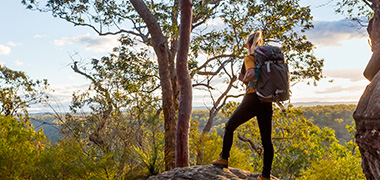
This role has a high level of AI exposure. While some human skills are required, many tasks could be automated or replaced by new technology.
Explore all careersAn Indigenous Land Worker preserves natural resources and heritage sites in Aboriginal communities, requiring physical fitness and strong communication skills.
Get qualified to work as an Indigenous Land Worker with a course recognised across Australia. Speak to a training provider to learn more.

In Australia, a full time Indigenous Land Worker generally earns $1,320 per week ($68,640 annual salary) before tax. This is a median figure for full-time employees and should be considered a guide only. As you gain more experience you can expect a potentially higher salary than people who are new to the industry.
 Courses.com.au Team
Courses.com.au Team
The number of people working in this industry has dropped slightly over the last five years. There are currently 4,200 people working in this field and some of them specialise as an Indigenous Land Worker. Indigenous Land Workers may find work in regional, rural and remote areas of Australia.
Source: Australian Government Labour Market Insights
 Courses.com.au Team
Courses.com.au Team
If you’re interested in a career as an Indigenous Land Worker, consider enrolling in a Certificate III in Indigenous Land Management. This course will explore ways to interpret Aboriginal culture, follow Aboriginal cultural protocols and work with an Aboriginal community or organisation. This qualification also covers topics including native animal rescue, pest control, landscaping and natural area restoration.
 Courses.com.au Team
Courses.com.au Team
Browse occupations related to Indigenous Land Worker



The growing recognition of the significance of Indigenous land management makes pursuing Indigenous Land Worker courses in Queanbeyan an excellent pathway for those passionate about integrating traditional practices with modern conservation efforts. These courses equip students with the essential skills and knowledge required for various roles within the field, enabling them to contribute effectively to the stewardship of Australia's natural resources. Given Queanbeyan's unique landscape, nestled within the Australian Capital Territory, training in this area provides local context that enhances the understanding of Indigenous cultural practices related to land management.
Participants in Indigenous Land Worker courses not only delve into the importance of environmental stewardship but can also explore related fields of study. Courses in Education and Training lay the groundwork for teaching future generations about land management, while Environment and Sustainability courses expand on conservation principles crucial for the preservation of Queanbeyan's diverse ecosystems. Additionally, classes in Aboriginal Studies provide valuable insights into the rich history and traditions of Indigenous peoples in the area, fostering deeper connections to the land.
Enrolling in Indigenous Land Worker courses in Queanbeyan also opens doors to further studies in Conservation and Land Management. This integrated approach ensures that graduates are well-prepared for a range of job roles within this vital sector, making a real difference in their communities. With only a limited number of course options available, now is the perfect time to take the next step towards a rewarding career that honours both Indigenous culture and environmental sustainability.